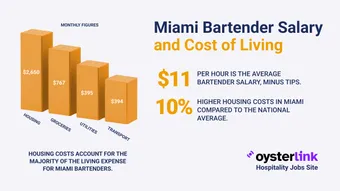Chicago, often dubbed the "Windy City," is renowned for its rich history, diverse culture, and architectural marvels. As we step into 2025, understanding the cost of living in this vibrant metropolis is crucial for both current residents and those considering a move. This comprehensive guide delves into various facets of Chicago's living expenses, providing a detailed overview to help you make informed decisions.
1. Overview of Chicago's Economic Landscape
Chicago stands as a significant economic hub in the Midwest, boasting a diverse economy that encompasses finance, manufacturing, technology, and tourism. The city's strategic location and infrastructure have attracted numerous businesses, contributing to its economic resilience.
Population Growth and Demographics
Over the years, Chicago's population dynamics have influenced its economic and social fabric:
- 2010: Approximately 2.7 million residents.
- 2015: Slight decline to around 2.72 million residents.
- 2020: Stabilized at about 2.71 million residents.
- 2025: Estimated at 2.73 million residents.
This stability reflects a balance between urban challenges and the city's enduring appeal.
2. Housing Costs
Housing remains a significant component of living expenses in Chicago. The city's housing market has experienced fluctuations over the years:
- 2010: Average rent for a 1-bedroom apartment in the city center was approximately $1,200.
- 2015: Increased to around $1,500.
- 2020: Further rise to about $1,800.
- 2024: Reached approximately $2,000.
- 2025: The average rent for a 1-bedroom apartment is $2,050. Source
These figures highlight the upward trend in rental prices, influenced by factors such as demand, economic conditions, and housing policies.
3. Transportation Expenses
Chicago offers a comprehensive public transportation system, primarily managed by the Chicago Transit Authority (CTA). Transportation costs have evolved over the years:
- 2010: CTA base fare was $2.25.
- 2015: Increased to $2.50.
- 2020: Rose to $2.75.
- 2024: Maintained at $2.75.
- 2025: The current CTA base fare is $3.00.
For those who drive, average gas prices have seen fluctuations, with the current rate at approximately $3.57 per gallon. Source
4. Healthcare Costs
Healthcare expenses are a vital consideration for residents. In Chicago, the average monthly healthcare cost is around $473, which is 7.3% higher than the national average. Source
5. Utilities and Energy Costs
Utility costs in Chicago encompass electricity, heating, cooling, water, and garbage services. The average monthly utility bill is approximately $187.27, which is 5.8% lower than the national average. Source
6. Grocery and Food Expenses
Grocery prices in Chicago are about 3% higher than the national average. For instance:
- Whole Milk: $4.86 per gallon.
- Eggs: $3.72 per dozen.
- Bread: $2.91 per loaf.
These figures indicate a slight premium on food items compared to other regions. Source
7. Education and Childcare Costs
Education and childcare expenses are significant considerations for families:
- 2010: Average annual childcare cost was approximately $9,000.
- 2015: Increased to around $11,000.
- 2020: Rose to about $13,500.
- 2024: Reached approximately $15,000.
- 2025: The average annual childcare cost is $15,500.
These rising costs underscore the importance of budgeting for families with young children.
8. Entertainment and Leisure Costs
Chicago offers a plethora of entertainment options, from theaters to sports events. Average monthly entertainment expenses are approximately $280, reflecting the city's vibrant cultural scene.
9. Taxes and Minimum Wage
Chicago's tax landscape and wage policies have evolved to address economic challenges:
- 2010: Minimum wage was $8.25 per hour.
- 2015: Increased to $10.00 per hour.
- 2020: Rose to $13.50 per hour.
- 2024: Reached $14.00 per hour.
- 2025: The current minimum wage is $15.00 per hour.
These adjustments aim to improve the standard of living for low-income workers.
10. Quick Takeaways
- Chicago's cost of living is 14% higher than the national average. Source
- Housing expenses are 39% higher than the national average. Source
- Transportation costs are 5% higher than the national average. Source
- Utility costs in Chicago are slightly lower than the national average. Source
- Grocery prices are about 3% higher than the national average. Source
- Healthcare costs are 7.3% higher than the national average. Source
11. Conclusion
Chicago remains a dynamic and diverse city, but the cost of living continues to rise, particularly in the housing and healthcare sectors. While wages have increased, affordability remains a challenge for many residents. Understanding these trends is crucial for anyone planning to move to or continue living in Chicago.
Whether you are a young professional, a family, or a retiree, managing expenses effectively will be key to maintaining financial stability in 2025.







Loading comments...